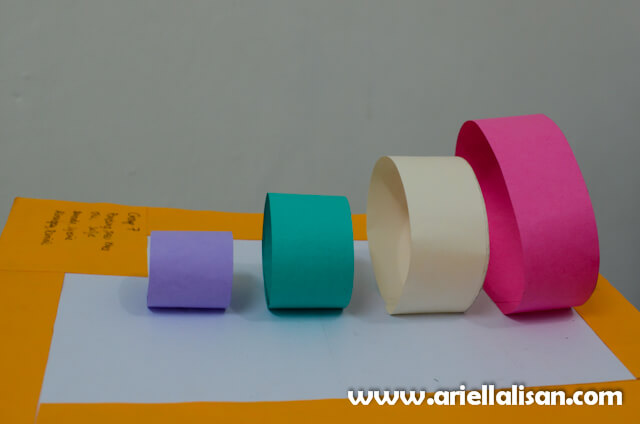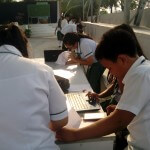JULY IS the National Disaster Consciousness Month in the Philippines. National Disaster Risk Reduction and Management Council work with other agencies in promoting awareness on emergencies and disasters.
The efforts are usually focused on typhoons and flashfloods. Earthquakes, too, are a potential hazard to our locality, what with the Philippines being in the ring of fire. So, I thought of an activity that will raise consciousness among the students about how their learnings in physics can be used to understand the effects of earthquakes and eventually, to help lessen the risks brought about by such diasaters.
In my lesson on properties of waves, I asked my students to construct a device out of construction paper and cardboard, where they explored resonance. The construction activity was based on the Unit Resource Book on Waves, Sound, and Light by McDougal Litell Science. Through the activity, the students will understand the concept of natural frequency and resonance.

After making observations on how the paper rings respond to shaking, they were made to analyze the effects of the qualities of each paper ring on how the rings vibrate.
To connect what they learn from the activity to real life problems, they were made to relate it to how architects and engineers design buildings and other infrastructures like bridges to withstand earthquakes or to minimize the damage they cause.
I also looked for videos on YouTube to show how earthquake resistant buildings are designed. Here are the videos:
This one is about Japan’s Tokyo Tree, the world’s tallest tower. And yes, they say that it is earthquake-proof.
This one is about a largest quake test in the world.The test aimed to come up with better designs for homes that are resistant to damages brought about by earthquakes. Observe how the building respond to the shaking.
I continue to improve my lessons to help my students appreciate physics better and help them realize that physics is indeed everywhere and well, it’s fun to learn physics.







